Genre: Platformer Developer: Big Evil Corp. Publisher: Big Evil Corp. Players: 1 Released: 2018
We’re living in a golden age for Genesis releases. The console’s homebrew scene has been quite active for several years, and companies like Super Fighter Team and Piko Interactive have been pumping out quality releases to the joy of 16-bit owners everywhere. Many of these games have been previously available, either when they were originally released in another region and language or with modern publishers fixing problems in the code and adding a slick new coat of polish for wester audiences. Few have been completely new products designed from the ground up.
That’s what makes Tanglewood by Big Evil Corporation (BEC) such a treat, especially since it arrived just in time for the 30th anniversary of the Mega Drive’s Japanese launch. The project began as a Kickstarter campaign in 2016 and was soon funded. When we spoke to developer Matt Philips last year, he discussed the lengths he was going to so that the game would be as authentically 16-bit as possible. To that end, Philips acquired a SNASM-based Mega Drive devkit, complete with assembler and debug kit. Not only was Tanglewood going to be a completely new Genesis title in 2018, it was going to be developed just as similar games had two decades ago.
The extra effort paid off, and BEC has produced an endearing little game that evokes the same feelings one had playing platformers like The Lion King for hours back in the day, when Animaniacs was the cartoon people were watching and Green Day was plastered all over MTV. In Tanglewood, players take control of Nymn, a young fox that has been separated from his pack in the forest. As night falls, dangerous predators emerge to hunt. Nymn must somehow survive until morning and find a way to rejoin his family. The little fox has no weapons or direct attacks, and he must instead rely on cunning, traps, evasion, and a host of special abilities to persevere.
Luckily, Nymn is not alone. Fireflies hover in each stage and collecting them can lead to some neat hidden bonuses and areas. Moreover, some of the smaller forest creatures called Fuzzls, which look like little tumbleweeds, are willing to help. They’ve wandered (or been placed?) far from the safety of their nests and will gladly reward our hero if he returns them. They can also be used to power the many contraptions that are scattered around some stages. The most valuable aid Fuzzls provide is color-based and span powers like flight, controlling enemies, and even the ability to stop time itself. The way Tanglewood presents these characters is part of its charming design. Players will usually find an empty nest first, complete with a little flower-like light shining on it to indicate that something goes there. Farther on, one of the fluffy creatures bounces impatiently, waiting for Nymn to roll it back to the nest and gift its savior with a new ability. There are no onscreen prompts or hints to tell players where to go, but though there might be a few times where it seems like there’s no clear path to advance, it never takes long to find the right direction. A large part of the fun comes from figuring out where to go, and Tanglewood’s design does a great job of urging players to explore without turning things frustrating or forcing too much back-tracking through a forest that is alive with sounds and animation.
On that note, the sound plays a major role in creating the ambiance and giving players a sense of the forest itself. This connection wasn’t apparent to me at first, and the first thing that struck me about Tanglewood when I booted it up was the lack of background music during much of the gameplay. I initially thought this would bring down the experience (I still have flashbacks about Trevor McFur on the Atari Jaguar. *SHUDDER*). As I played, it became increasingly clear that this was not the case. There are many ambient sounds that fill the game and help bring the different faces of the forest to life. The few tracks there are timed to play during specific events, adding to the sense of atmosphere.
Tanglewood’s presentation meshes nicely with its gameplay, creating a product that harkens back to a time when Genesis platformers were all too common. That’s a great feeling to have nowadays. Had it been released back in 1994 though, I think it still would have forged a proper identity. It doesn’t rely on its furry mascot to carry it. Instead, it puts all its charm into the many well-designed puzzles found in the large and beautiful environments that comprise the multiple stages in each of its nine areas. Players must flip switches, activate and manipulate machinery, and use objects to lure in and kill enemies. Eventually, another smaller fox appears to help Nymn advance through some areas. The puzzle elements are no doubt the fruit of Phillips’ years at developer Traveler’s Tales, where he honed the ability by working on several Lego titles.
While Tanglewood is a stellar first effort from BEC, there are a few things that should be noted for improvement. Some puzzles, for instance, are a little too vague and can become a bit irritating if one misses the single box/rock/out-of-the-way Fuzzl needed to solve them. Additionally, enemies have a nasty tendency to be waiting as soon as one lands, leading to some frustrating insta-kills. Moving the D-pad up or down reveals a bit more of the surrounding in each direction, but it doesn’t usually give one a sense of whether there are enemies, such as a Hogg or Djakk, waiting below. These are minor quibbles that won’t likely be issues for all players, but they are worth noting. The inclusion of a checkpoint system and password feature make these issues more of a learning curve than a problem, and overall, I found the majority of Tanglewood’s puzzles and obstacles to be quite fair.
Purchasing the game on Steam includes a Mega Drive BIN file that plays on flash carts like the Mega Everdrive. That was the way I played it for this review, and I didn’t notice any of the input lag that some people have mentioned about the PC version. Personally, I feel that Tanglewood is a game that should be experienced in the most authentic way possible, which is why I elected to play it on real hardware. BEC made every effort to create the game the way a ‘90s Genesis developer would, so it’s only fitting that we play it the way someone would have back then.
I seriously recommend buying Tanglewood. If a physical purchase isn’t an option, than the Steam version is a great way to go, since it brings the Mega Drive BIN with it. I missed out on the first batch of physical releases but plan to pre-order from the second run, as I enjoyed Tanglewood enough to want a copy for my personal collection. BEC has made a very impressive debut on the Genesis, giving players a rock-solid little platformer that oozes with personality and excellent presentation. I cannot wait to see what comes next.
SCORE: 9 out of 10

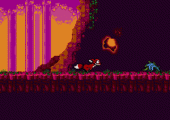
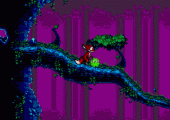
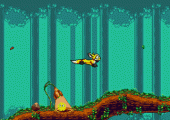
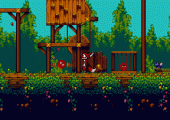
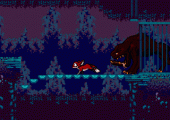
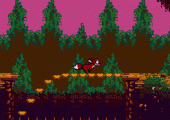
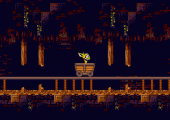
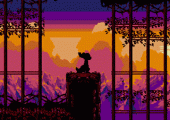
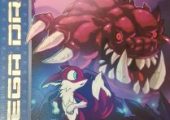
Recent Comments